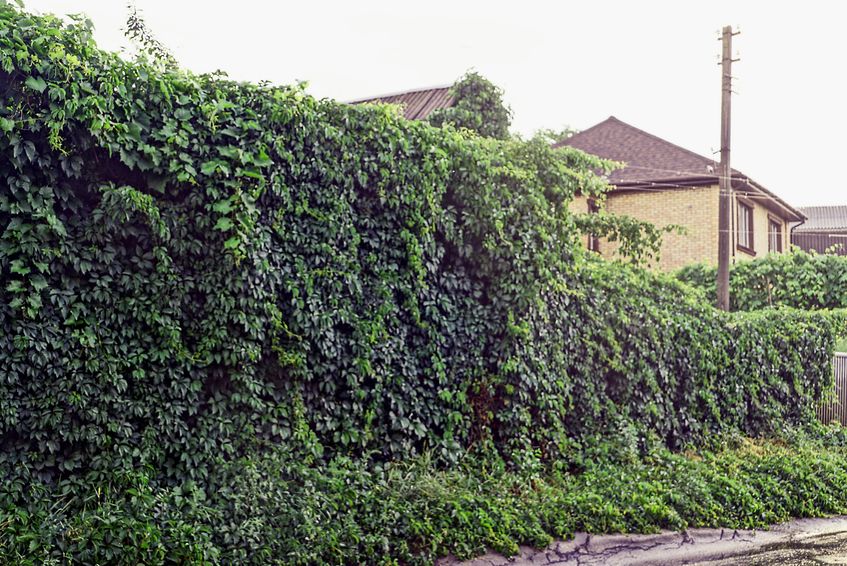Although ivy can be an attractive plant when well-maintained, overgrown ivy quickly causes a host of issues for homeowners and those who manage commercial properties. When ivy grows near trees, for example, its added weight can cause the tree to blow over with strong winds.
Another common problem with ivy is that the plant can wind its way between home siding and wooden fences. The roots of the ivy attach to wood, which creates gaps and makes it easier for termites and other wood-eating pests to gain access to the home or fence. These are just some of the reasons people decide to remove ivy plants from their home or business.
Removing Ivy from Trees
The proper tools to use to remove overgrown ivy from trees depends on the type of tree involved. Trees such as pine, black walnut, Osage orange, and some varieties of oak typically have thick enough bark to withstand chainsaw damage. With other types of trees, including cherry, cedar, and sycamore, the bark is too thin to withstand much damage at all. This is also the case with immature trees.
Using a handsaw instead of a chainsaw when removing ivy from at-risk trees minimizes the chance of damage. A prybar and pruning tools also come in handy for pulling down long strings of ivy. Ivy that grows on trees often responds like wallpaper in that it sometimes comes down in one smooth piece. However, other times breaks into smaller pieces that makes the job take much longer.
It’s dangerous for people not accustomed to working on ladders to handle tools at elevation. This happens often if the ivy has grown beyond onto tall fences or trees. Calling a professional arborist to complete the job is a better idea in this situation.
Removing Ivy from the Lawn
Patches of ivy on an otherwise immaculate lawn can detract from its appearance as well as threaten lawn health. Despite these risks, people should avoid using herbicide to kill ivy since the herbicide can run off and unintentionally kill nearby plants. Picking up the ivy with a gloved hand and peeling it back helps to locate the edge.
The next step is to use a hand shovel or edging tool to lift the corner of the ivy patch and start peeling it away from the grass. The downside of this method is that it can be time-consuming and impossible to complete for those with a lot of ivy on their lawn.
Another option is to use a lawnmower attachment to remove the unwanted ivy. Flail mowers work better than rotary brush mowers for this purpose. Property owners may wish to avoid this if they have concerns about damage to their lawnmower. In this case they should call a professional instead.
Using Solarization to Kill Overgrown Ivy
Solarization involves placing long, thick plastic sheeting over an overgrown ivy patch and securing the sheet with garden stakes. While the ultraviolet rays of the sun will eventually kill ivy patch, the process takes up to two years. The ivy slowly wilts away due to lack of oxygen and water. For people who don’t want to wait that long, the best bet is to contact a professional lawn care service.






